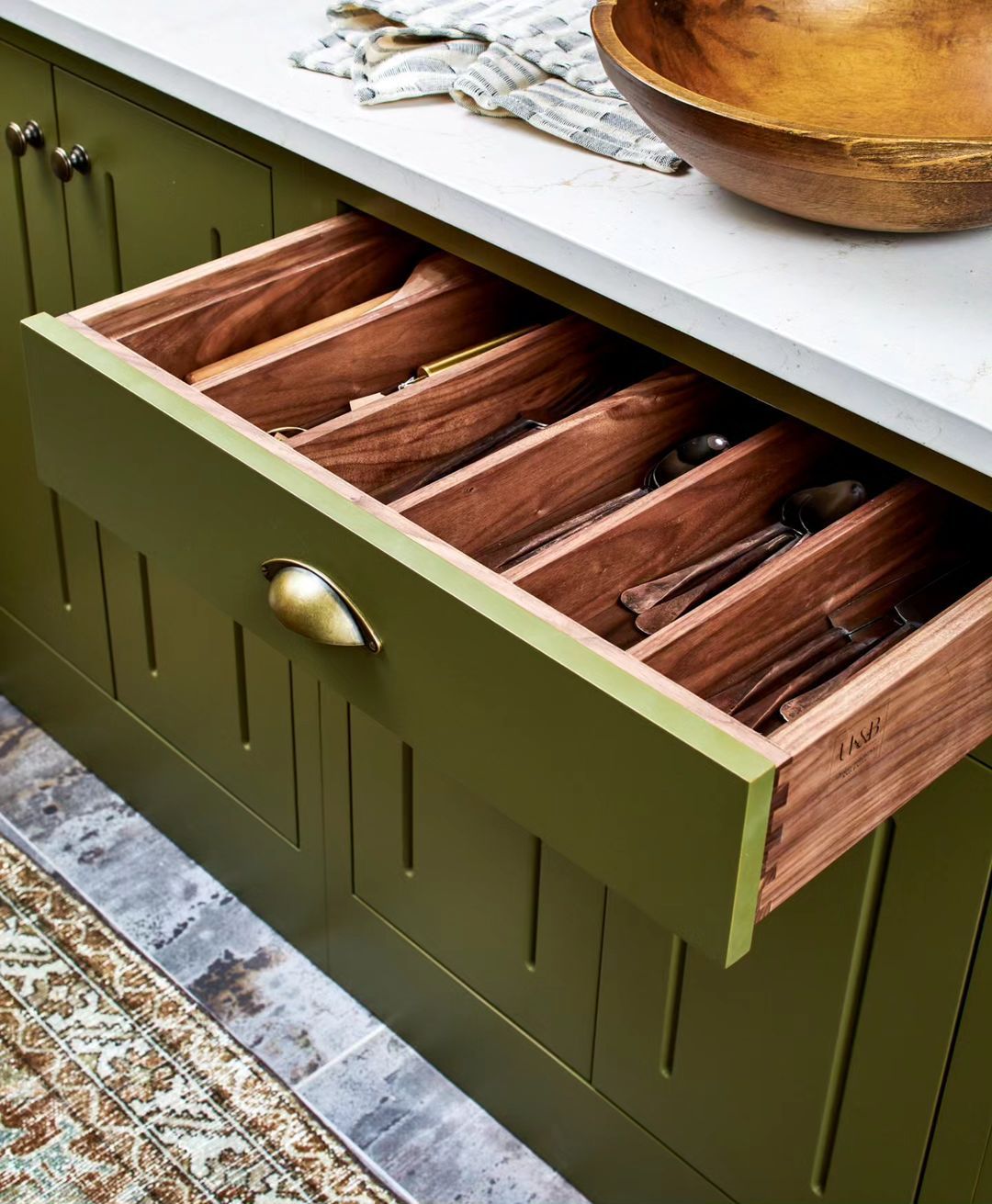
When storage is hidden away it’s easy to ignore the reality of a cluttered space. We see this time and time again with kitchen drawers. As long as something can fit into a drawer, we can forget about it but unfortunately experts say this shouldn’t be the case.
To keep a tidy and clutter free home, we need to face what’s inside our storage solutions and go that step further to make sure we aren’t filling our homes with unnecessary items. We’ve done the hard work for you and have whittled down four key things that professional organizers insist should be a starting point for drawers when it comes to how to organize a kitchen.
1. Categories

Rather than a physical accessory, the first step in how to organize kitchen drawers is separating your items into categories. It’s no good investing in storage gadgets without knowing exactly what you want to store in them first. So, make a plan and be clear about what you want to store in your kitchen drawers and go from there.
'Kitchen drawers can get cluttered fast since it is easy to shove items inside and not see them again,' professional organizer Ben Soreff of H2H Organizing explains. 'Any drawer system begins with the review. Typical kitchen drawers include flatware, cooking utensils, cloths, foil and more’.
Once you’ve completed your review, then you can sort things out into categories. We recommend writing it all down so you’re clear about what you want to store and this will help you throw away any items that you simply do not need.
2. Draw dividers

Draw dividers are one of the best kitchen organizers, and they're popular for good reason! Typically, we use them for the cutlery drawer and they work wonders for splitting up different types of flatware to stop the drawer doesn’t look like a complete mess.
However, have you considered drawer dividers for the rest of your kitchen drawers? Shara Kay from SK Organizing says that ‘internal dividers or drawer inserts for drawers that store small items like utensils are a must for creating a tidy kitchen’! If you’re currently going through the process of designing your kitchen, ask your kitchen designer to incorporate some handmade dividers into the drawers for you that are made out of the same material as the rest of your kitchen.
3. Multi-functional items

Having things that work in many different ways as opposed to one are a great asset to any area of the home. Keeping kitchen drawers organized is down to the items we choose to store in them. Kitchens are a highly functional space and 80% of what’s in a kitchen should be there for a practical reason. Using a technique like the 80-20 decluttering rule could come in particularly handy in the kitchen.
Shara explains that a tidy kitchen should have ‘a curated collection of multi-purpose items, for example a chef’s knife versus speciality choppers, generic round and rectangular glass storage containers instead of containers shaped like specific fruits’.
Making sure we invest in multifunctional kitchen items is undoubtedly key for keeping an organized and clutter-free kitchen.
4. No dupes
Kitchen drawers often contain items that we never reach for. Therefore, it’s easy to end up with duplicates of a certain item. ‘We should keep duplicates to a minimum,' Shara says. 'Try and get rid of items that you have more than one of. For example, every kitchen only needs one can opener and one citrus press’.
Because we don’t always reach for these kinds of gadgets, it’s easier to forget that we have them in the depths of our kitchen storage, and then go out and buy another one. To avoid this from happening, make sure everything in your kitchen drawers has a specific home (this is why drawer dividers are so effective)!
Leading on from this, Shara also explains that we need to have ‘defined limits for items such as grocery bags and takeout utensils’ otherwise our kitchen drawers can become overwhelmed. A great solution to this would be taking a mental note of how many takeout boxes and grocery bags you actually need and refusing to go over that amount. For example, it’s unlikely that an average-sized kitchen would ever need more than 10 plastic containers therefore once you exceed that limit, it’s time to reach for the recycling bin.







